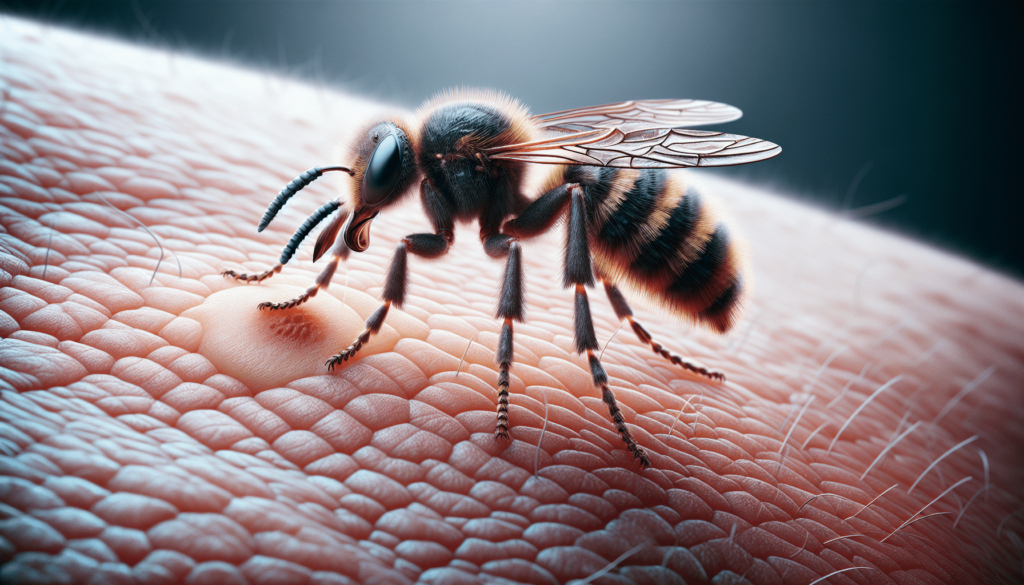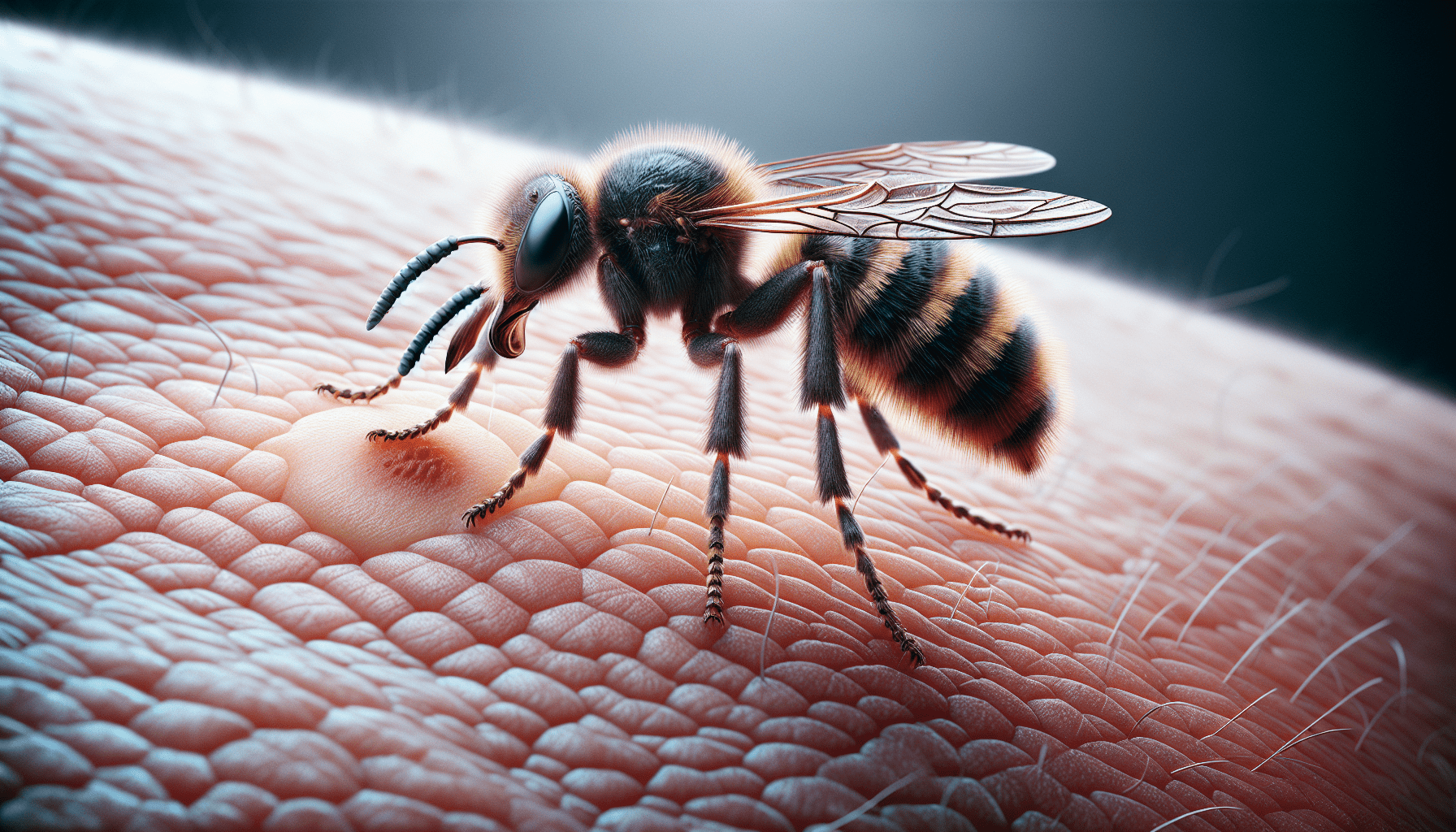Have you ever wondered why some people swell up like a balloon after an insect bite, while others barely notice? Understanding why allergic reactions to insect bites and stings happen can not only shed light on this phenomenon but also help you manage and prevent them better.
Understanding Allergic Reactions to Insect Bites and Stings
Insect bites and stings can cause a range of reactions, from mild discomfort to life-threatening emergencies. This article aims to explain the science behind these reactions, identify which insects are the culprits, and provide you with actionable advice on treatment and prevention.

What Constitutes an Allergic Reaction?
Let’s start with the basics. An allergic reaction is your immune system’s exaggerated response to a usually harmless substance. When it comes to insect bites and stings, the substances are often proteins in the insect’s saliva or venom. Your immune system mistakenly identifies these proteins as threats and mounts a defense against them, which can lead to symptoms ranging from mild to severe.
Types of Allergic Reactions
Allergic reactions can generally be classified into three categories:
| Type | Symptoms |
|---|---|
| Mild Local Reaction | Redness, minor swelling, itching at the bite or sting site. |
| Large Local Reaction | Extensive swelling near the bite or sting, which can persist for days. |
| Systemic Reaction | Symptoms that affect the entire body, including anaphylaxis, which can be life-threatening. |
Why Do Allergic Reactions Occur?
Your immune system releases chemicals like histamines to fight off the proteins introduced by the insect. These chemicals cause the symptoms you’re probably all too familiar with—redness, swelling, and itching. In severe cases, the release of these chemicals can affect your entire body, leading to systemic reactions or even anaphylaxis.
Common Insects That Cause Allergic Reactions
Knowing which insects are likely to cause allergic reactions can help you take preventive measures. Different insects use different methods and substances when they bite or sting, leading to varying reactions.
Stinging Insects
Stinging insects inject venom into your skin. Common culprits include:
-
Bees: Known for their painful stings, bees leave behind a stinger that continues to release venom even after the initial sting.
-
Wasps and Hornets: These insects can sting multiple times, injecting venom with each sting.
-
Fire Ants: They bite to hold on and then inject venom multiple times through a stinger.
Biting Insects
Unlike stinging insects, these bugs inject saliva that contains proteins to numb the area and prevent blood clotting:
-
Mosquitoes: Their bites are often itchy and can transmit diseases like malaria and West Nile virus.
-
Fleas: These can cause intense itching and, in some cases, transmit diseases.
-
Ticks: They can attach to your skin for days, feeding on your blood and potentially transmitting diseases like Lyme disease.
Other Insect Threats
- Bed Bugs: While not known for transmitting diseases, their bites can cause significant itching and discomfort.
- Horseflies: These can cause painful bites and occasionally transmit diseases.
Symptoms of Allergic Reactions
The symptoms of an allergic reaction to an insect bite or sting can vary widely. Knowing what to look for can help you act quickly and seek appropriate treatment.
Mild Symptoms
- Redness and swelling around the bite or sting
- Itching and minor pain
- A small, raised bump
Moderate Symptoms
- Extensive redness and swelling
- Pain that lasts more than a day
- Itching that spreads beyond the initial site
Severe Symptoms
- Difficulty breathing
- Swelling of the face or throat
- Rapid heartbeat
- Dizziness or fainting
- Stomach cramps, nausea, or vomiting
When to Seek Medical Attention
Knowing when to seek medical help can be the difference between a minor inconvenience and a severe health risk. If you experience any severe symptoms, you should seek immediate medical attention. Anaphylaxis is a life-threatening reaction that requires urgent treatment, usually with an epinephrine injector.
Home Treatments for Mild to Moderate Reactions
For less severe reactions, there are several at-home treatments you can try to alleviate the symptoms:
- Cold Compresses: Apply a cold pack to reduce swelling and numb the area.
- Antihistamines: Over-the-counter options like Benadryl can help reduce itching and swelling.
- Topical Treatments: Calamine lotion or hydrocortisone cream can soothe the skin.
- Elevation: Keeping the affected area raised can help reduce swelling.

Preventing Allergic Reactions
Prevention is always better than cure, especially when it comes to allergies. Below are some tips to help you avoid insect bites and stings.
Personal Precautions
- Wear Protective Clothing: Long sleeves and pants can minimize exposed skin.
- Use Insect Repellent: Products containing DEET or picaridin are generally effective.
- Keep Your Environment Clean: Remove standing water where mosquitoes breed and keep your living space clear of food particles and trash.
- Avoid Scented Products: Floral perfumes and scented lotions can attract insects.
Environmental Measures
- Mosquito Nets: These can be especially useful in areas with high mosquito populations.
- Pest Control Services: Hiring professionals to treat your home and property can significantly reduce the number of insects around you.
- Keep Windows and Doors Sealed: Make sure screens are intact and doors are closed to prevent insects from entering your living spaces.
Diagnosis and Testing
If you suspect that you have an allergy to insect bites or stings, visiting an allergist can provide you with a definitive diagnosis.
Skin Prick Tests
In this test, small amounts of the suspected allergen are introduced into your skin. If you’re allergic, you’ll develop a small, raised bump at the test site.
Blood Tests
Blood tests measure the levels of specific antibodies (IgE) that your immune system produces in response to an allergen. This can help confirm a suspected allergy.
Long-term Management Strategies
If you have a known allergy, long-term management strategies can help you live more comfortably and safely.
Allergen Immunotherapy
Sometimes called “allergy shots,” this treatment involves gradually introducing your body to small amounts of the allergen to build up your immunity over time. This treatment requires a commitment but can be highly effective.
Emergency Action Plans
Having an emergency action plan, including the use of an epinephrine injector, can save lives. Make sure you and your family members are familiar with the plan and know how to administer any necessary medications.
Myths and Facts
Understanding the difference between myths and facts can help you better manage and prevent allergic reactions.
| Myth | Fact |
|---|---|
| All insect bites and stings are dangerous. | Most are harmless and only cause mild reactions. |
| You can develop immunity to insect stings. | While you can undergo allergen immunotherapy, natural immunity is unlikely. |
| Scratching a bite or sting is harmless. | Scratching can lead to secondary infections. |
| All large local reactions indicate a severe allergy. | Large local reactions are usually not indicative of severe allergic reactions. |
Conclusion
Insect bites and stings are a part of life, but understanding how to manage and prevent allergic reactions can make them much less daunting. By recognizing the insects that are likely to cause allergic reactions, knowing the symptoms, and taking appropriate preventive measures, you can significantly reduce your risk and react quickly if a severe reaction occurs.
Recognizing symptoms, seeking appropriate medical attention, and employing preventative strategies can ensure you are well-prepared for any encounter with our tiny, six-legged friends. Stay informed, and stay safe.
